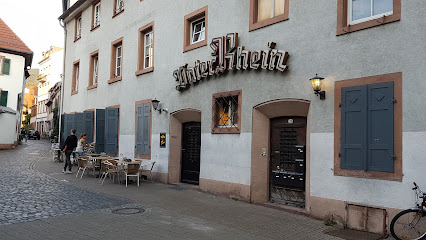
Rhine River: Europe's Majestic Waterway
Discover the Rhine River: A journey through history, culture, and breathtaking landscapes, from medieval castles to vineyard-covered hills, in the heart of Europe.
The Rhine River, a historical artery of Europe, flows through six countries, carving a path through stunning landscapes and past culturally rich cities. From its source in the Swiss Alps to its delta in the Netherlands, the Rhine has served as a vital trade route, a natural border, and an inspiration for artists and poets. Its banks are adorned with medieval castles, vineyards, and picturesque villages, offering a captivating blend of history, culture, and natural beauty. Whether you're cruising its waters, cycling along its banks, or exploring the charming towns that line its shores, the Rhine River promises an unforgettable journey through the heart of Europe.
A brief summary to Rhine River
Local tips
- Consider a river cruise for a relaxing and comprehensive way to see multiple cities and landmarks along the Rhine.
- Explore the Middle Rhine Valley, a UNESCO World Heritage Site, for the highest concentration of castles and vineyards.
- Sample local wines in the Rheingau region, known for its excellent Riesling.
- Check for local festivals and events along the Rhine, especially during the summer and Christmas market seasons.
- Utilize the efficient public transportation system (trains and buses) to explore the Rhine Valley at your own pace.
Getting There
-
Public Transport
Reaching the Rhine River is easily accessible via train to major cities along its banks, such as Cologne, Koblenz, Mainz, or Basel. From the main train stations in these cities, local buses, trams, or even short walks will lead you to the riverfront. For example, in Cologne, a short walk from the Köln Hauptbahnhof (main station) will bring you to the Rhine promenade. Single fares for local transport typically cost between €2-€3. Consider purchasing a day ticket if you plan to use public transport extensively within the city.
-
Ferry
In certain areas, particularly between Mainz and Koblenz where bridges are less frequent, ferries provide crossings to access attractions on the opposite bank. From train stations or bus stops, follow signs for 'Fähre' (ferry). A typical ferry crossing costs around €2-€5 per person, and some ferries also accommodate bicycles for a small additional fee (around €1-€2). Check the ferry schedules in advance, as they may vary depending on the season.
-
Driving
If driving, use major highways (e.g., A61, A3) to reach towns along the Rhine. Be aware of parking limitations in the historic centers of towns like Rüdesheim or Bacharach. Look for designated 'Parkplatz' (parking area) signs. Parking fees typically range from €1-€3 per hour or €6-€11 for a day ticket. Some cities, like Boppard, have parking guidance systems to direct you to available spaces. Note that in Switzerland, a toll sticker (vignette) is required on motorways; it costs CHF 40 and is available near the border.
-
Taxi/Ride-Share
Taxis and ride-sharing services are available in most cities along the Rhine. They can be convenient for reaching specific points along the riverfront or for traveling between nearby towns. A short taxi ride within a city center typically costs between €10-€20. Be sure to confirm the fare with the driver before starting your journey.
Discover more about Rhine River
Iconic landmarks you can’t miss
Rhine River
0.0 km
Discover the Rhine River: A legendary waterway through the heart of Europe, offering stunning scenery, historic castles, and vibrant culture from the Swiss Alps to the North Sea.

Friedensdenkmal “Mahnmal des Friedens - PAX AETERNA“
5.1 km
Discover the Friedensdenkmal in Philippsburg, a profound monument dedicated to peace, reflection, and historical significance, perfect for every traveler.
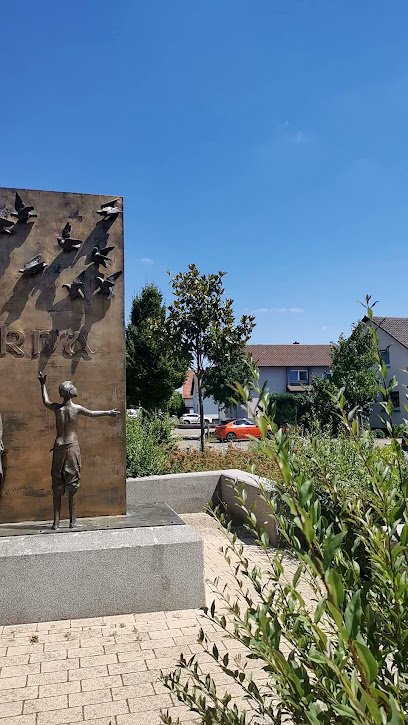
Ölberg
10.3 km
Discover the serene beauty and historical significance of Ölberg in Speyer, a perfect retreat for nature lovers and history enthusiasts alike.
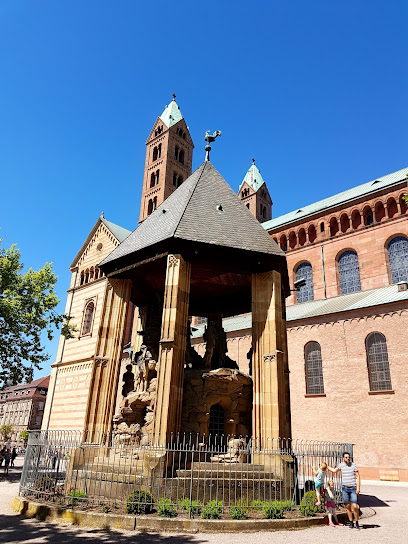
Ehemaliger Standort eines Leugensteins des Kaisers Diocletian
19.9 km
Discover the historic charm of the former site of Emperor Diocletian's Leugenstein in Limburgerhof, a captivating glimpse into the Roman Empire's legacy.
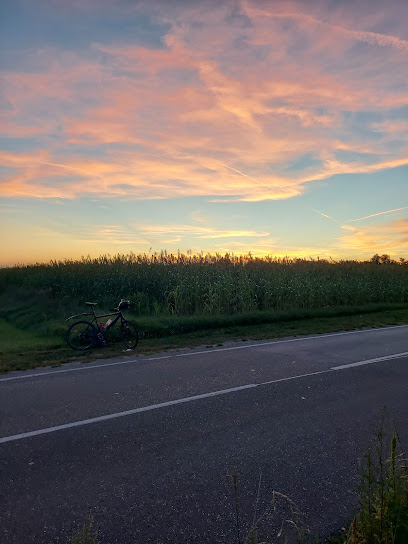
Palatina Events
22.5 km
Discover the beauty and culture of the Palatinate region with Palatina Events - your gateway to unforgettable tours and experiences.
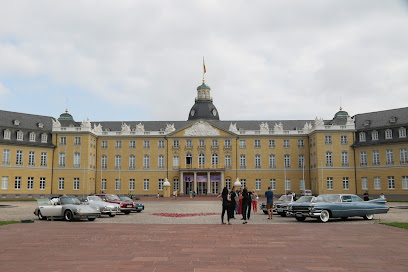
Burgruine Rietburg
22.8 km
Explore the rich history and breathtaking views at Burgruine Rietburg, a medieval castle ruin in Rhodt unter Rietburg, Germany.
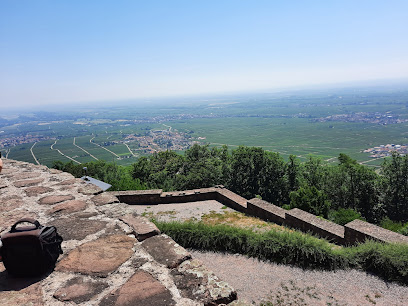
Kalmithaus
24.1 km
Discover Kalmithaus: A Palatine culinary haven blending traditional German flavors with breathtaking mountain views, perfect for nature lovers and food enthusiasts.
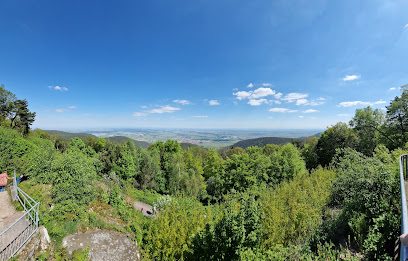
Prinz Wilhelm von Baden
24.2 km
Immerse yourself in the rich history and stunning architecture of Prinz Wilhelm von Baden, a cultural landmark in Karlsruhe, Germany.
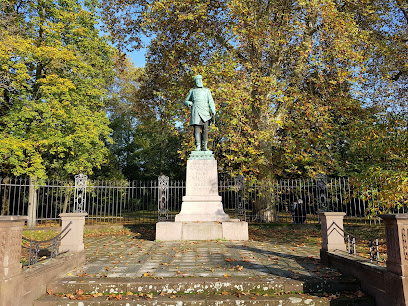
Federal Constitutional Court
24.3 km
Visit Germany's Federal Constitutional Court in Karlsruhe, the guardian of the Basic Law, and witness the heart of German democracy in action within its transparent architecture.
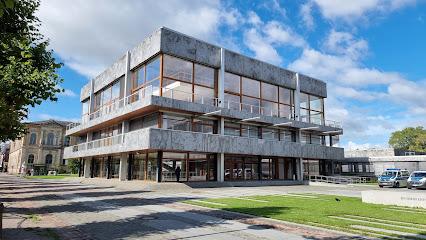
Chapel "Small Kalmit"
24.4 km
Experience serenity and breathtaking views at Chapel Small Kalmit in Landau, a charming destination for spiritual reflection and nature lovers.

Kaiserstraße 217
24.7 km
Experience Karlsruhe's vibrant Kaiserstraße: a blend of historic charm and modern shopping, offering diverse retail, culinary delights, and cultural events in the heart of the city.
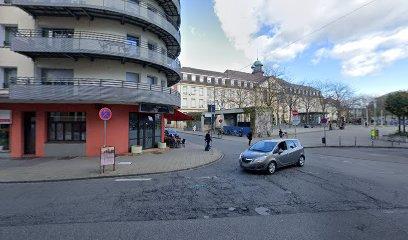
Federal Court of Justice
24.9 km
Discover the heart of German law at the Federal Court of Justice in Karlsruhe, a symbol of justice and legal tradition, and explore the adjacent Museum of Legal History.
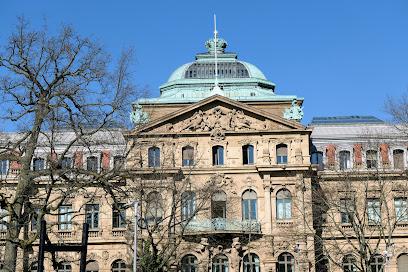
Rondellplatz
25.0 km
Discover Rondellplatz in Karlsruhe: A neoclassical square steeped in history, crowned by the Constitution Column, and surrounded by architectural gems and vibrant city life.
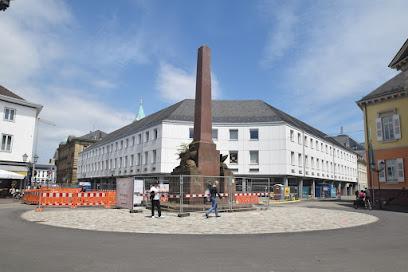
Lagenstein
26.2 km
Discover Lagenstein in Forst an der Weinstraße - a stunning tourist attraction blending history, nature, and breathtaking views in one picturesque location.
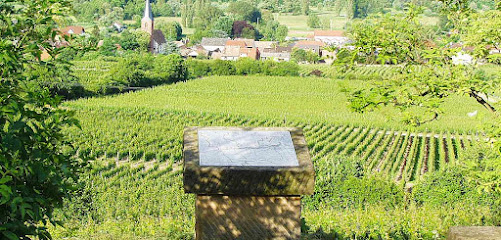
Catholic Church of St. Peter
26.4 km
Discover the serene beauty and rich history of the Catholic Church of St. Peter in Heidelberg-Kirchheim, a spiritual haven with stunning architecture and a welcoming atmosphere.
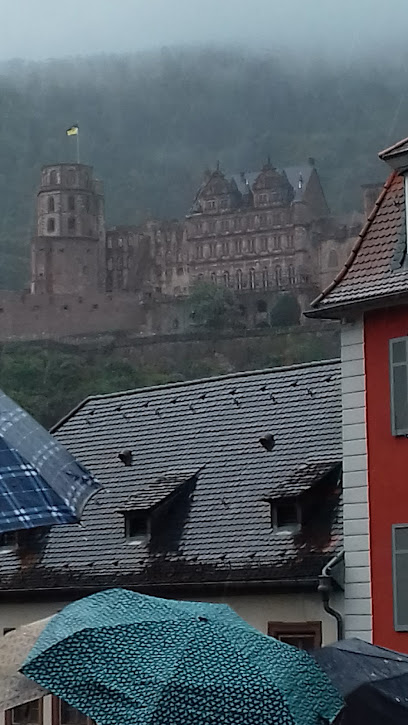
Unmissable attractions to see
Historical Museum of the Palatinate
10.2 km
Discover the rich history of the Palatinate at the Historical Museum of the Palatinate in Speyer, a cultural gem filled with captivating exhibits.
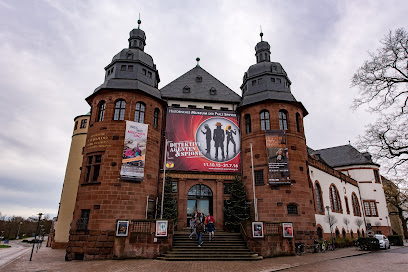
Speyer - Cathedral Square
10.4 km
Explore the historic beauty of Speyer's Cathedral Square, a vibrant market square rich in culture and stunning architecture.

Speyer Cathedral
10.4 km
Explore Speyer Cathedral, a stunning UNESCO World Heritage site showcasing Romanesque architecture and rich historical significance in Germany.
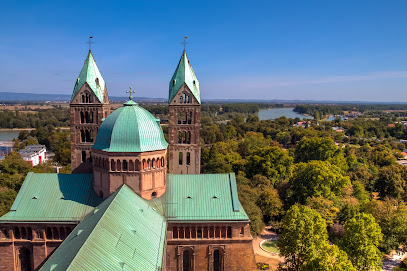
SEA LIFE Speyer
10.7 km
Experience the enchanting underwater world at SEA LIFE Speyer, where vibrant marine life meets engaging educational exhibits in a family-friendly environment.
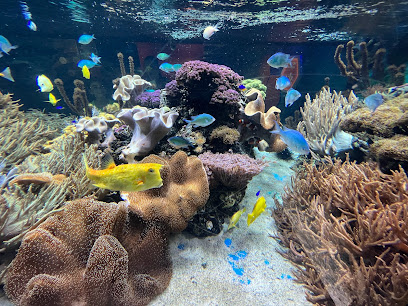
Holiday Park Germany
11.5 km
Experience the thrill and joy of Holiday Park Germany, a top amusement park filled with roller coasters, family attractions, and unforgettable adventures.
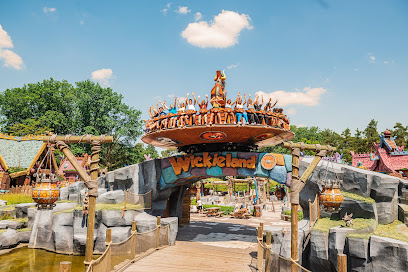
Schwetzingen Palace
21.6 km
Explore the stunning Schwetzingen Palace, a Baroque masterpiece surrounded by beautiful gardens, capturing the essence of German royal heritage.
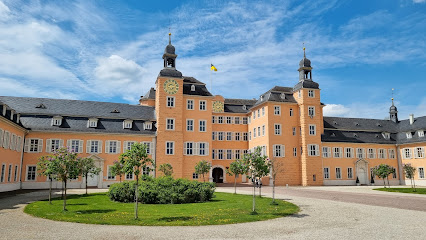
Schwetzingen
21.8 km
Experience the beauty and history of Schwetzingen, home to stunning gardens and the exquisite Schwetzingen Palace in Germany's scenic landscape.
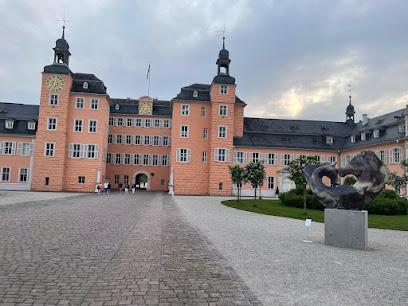
Victory and Peace Monument
22.0 km
Explore the Victory and Peace Monument, a historical gem in Edenkoben, offering stunning views, rich heritage, and a serene atmosphere.
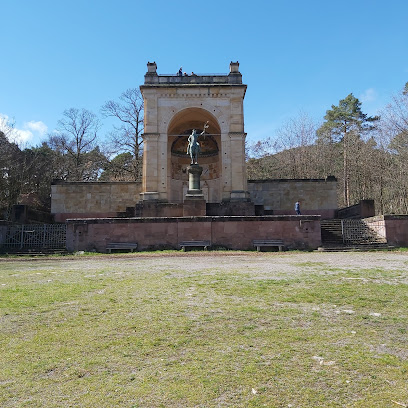
Hambach Castle
22.1 km
Discover Hambach Castle, a historical landmark celebrating German democracy with stunning views and a rich heritage amidst the scenic Palatinate vineyards.
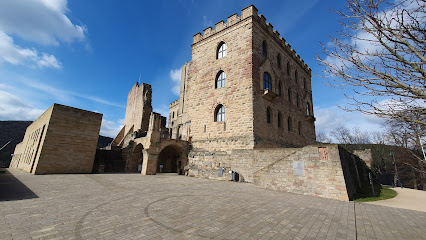
Neustadt/Weinstrasse Railway Museum
22.2 km
Visit the Neustadt/Weinstrasse Railway Museum for an immersive journey through Germany's railway history, featuring stunning exhibits and engaging activities for all ages.
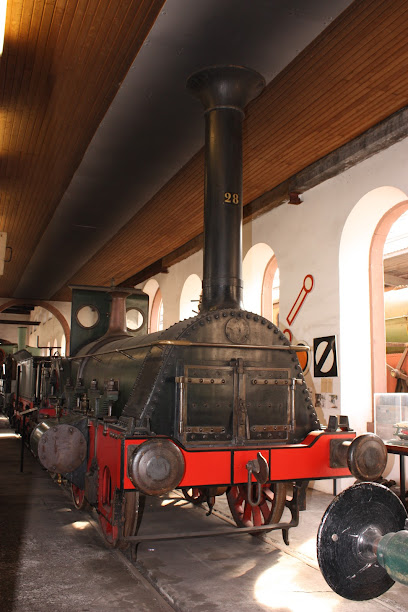
Schloss Kropsburg
22.2 km
Discover the majestic Schloss Kropsburg in Sankt Martin, a captivating castle surrounded by stunning hiking trails and rich history, perfect for every traveler.
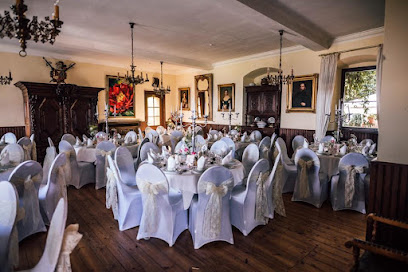
Rietburg Chairlift
22.4 km
Experience stunning views and serene landscapes aboard the Rietburg Chairlift in Edenkoben, a perfect getaway for nature lovers and adventure seekers.
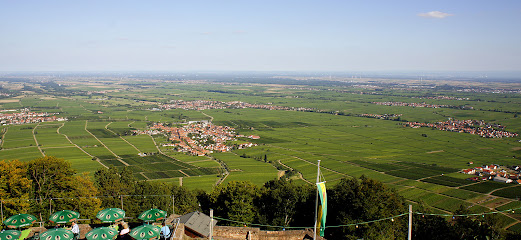
Altstadt
22.6 km
Discover the enchanting Altstadt in Neustadt an der Weinstraße, a historical landmark showcasing charming architecture and vibrant local culture.
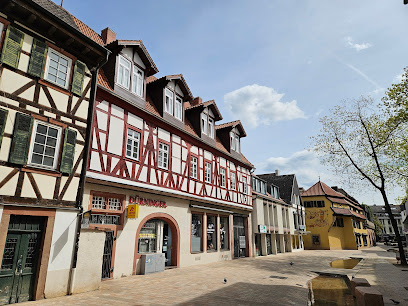
Paradiesbrunnen
22.7 km
Discover the charm of Paradiesbrunnen in Neustadt an der Weinstraße, a picturesque fountain surrounded by rich history and vibrant local culture.
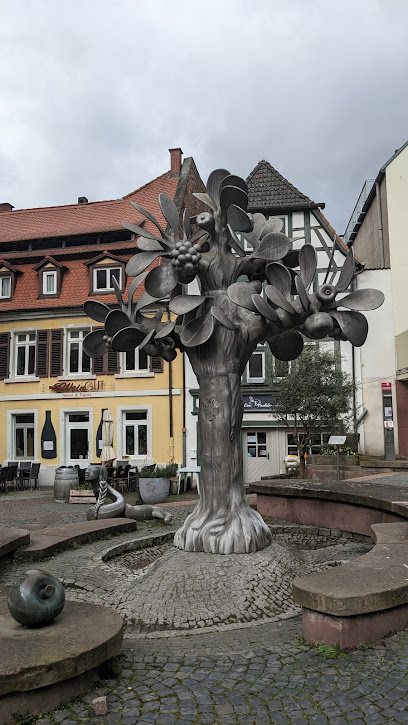
Alte Burg
23.2 km
Discover the historic Alte Burg in Gimmeldingen, a captivating castle with stunning views and rich cultural heritage, perfect for every traveler.
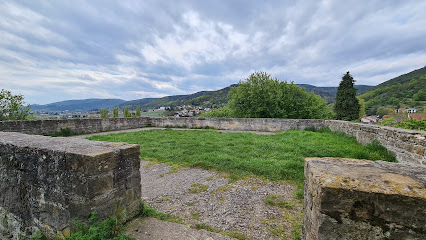
Essential places to dine
Pfälzer Stube
17.8 km
Experience authentic Palatine cuisine at Pfälzer Stube in Herxheim bei Landau – where tradition meets exceptional culinary artistry.
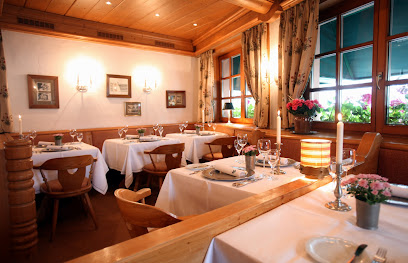
Restaurant Friesenstube
23.1 km
Experience authentic German cuisine at Restaurant Friesenstube in Landau – where local flavors meet exceptional hospitality.
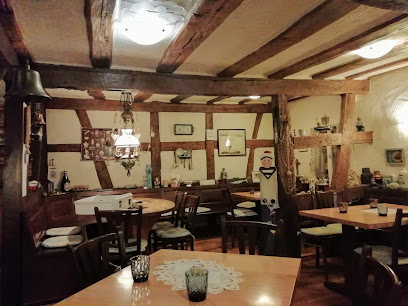
Stories Pop-Up Kitchen
23.4 km
Discover culinary excellence at Stories Pop-Up Kitchen in Heidelberg - where tradition meets innovation in every dish.
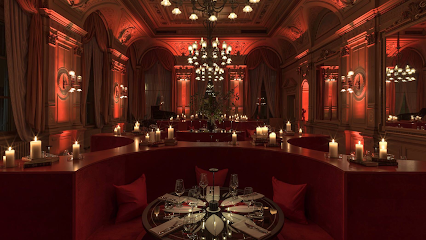
Restaurant Schwarzer Hahn
24.4 km
Experience gourmet French and Palatine cuisine at Restaurant Schwarzer Hahn in Deidesheim - where every meal is a celebration of taste.
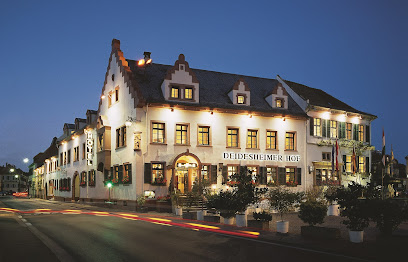
Restaurant Zum Prinz
24.7 km
Savor authentic German flavors at Restaurant Zum Prinz in Ilbesheim bei Landau – A culinary haven with a charming beer garden.
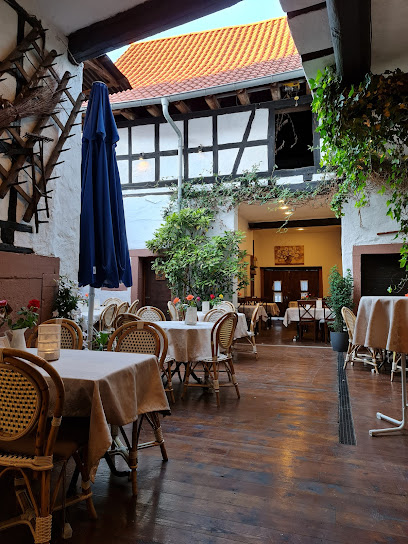
Restaurant Hubertushof
24.7 km
Experience exquisite German cuisine at Restaurant Hubertushof in Ilbesheim - a culinary treasure offering seasonal dishes and fine wines.

Weinstube Brennofen
24.7 km
Discover authentic German flavors at Weinstube Brennofen - where tradition meets exquisite taste in Ilbesheim bei Landau.
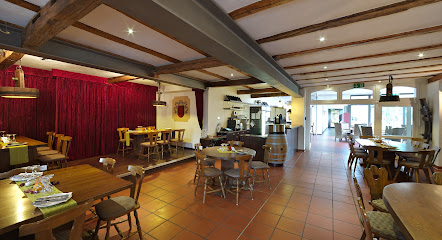
Restaurant DUFKE
26.5 km
Discover authentic German cuisine at Restaurant DUFKE in Heidelberg—where tradition meets taste in every dish.
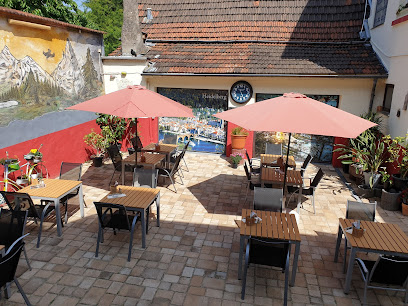
Adriatic Seven
27.6 km
Discover Adriatic Seven in Heidelberg: A Mediterranean culinary delight that promises an unforgettable dining experience with exquisite flavors.

Heid's Grill & Restaurant
27.7 km
Discover culinary excellence at Heid's Grill & Restaurant in Heidelberg—where succulent steaks meet a warm atmosphere for unforgettable dining.
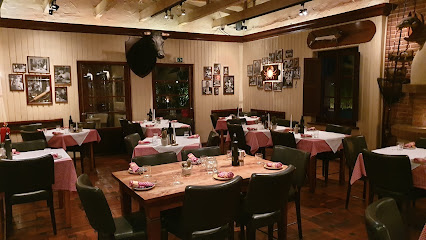
Restaurant Schneider
27.7 km
Experience authentic German cuisine at Restaurant Schneider in Dernbach, where tradition meets taste in a cozy atmosphere.
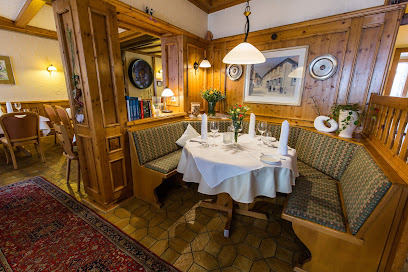
Qube Signature Bar & Restaurant
27.9 km
Discover Heidelberg's culinary scene at Qube Signature Bar & Restaurant - where exquisite flavors meet elegant ambiance.
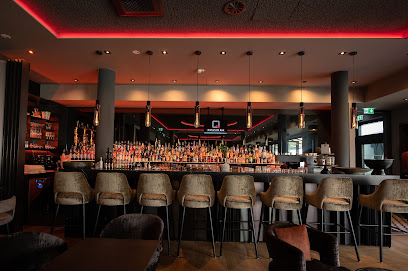
NEO - Bar und Restaurant
28.1 km
Experience culinary excellence at NEO in Heidelberg, where grilled delights meet exquisite sushi in a stylish setting.
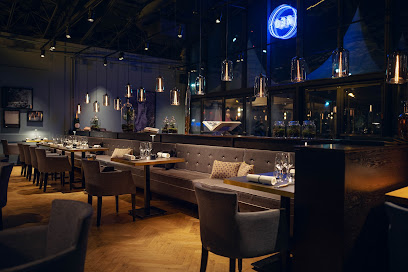
Restaurant Tati
28.7 km
Experience authentic French cuisine at Restaurant Tati in Heidelberg – perfect for families and food lovers alike.
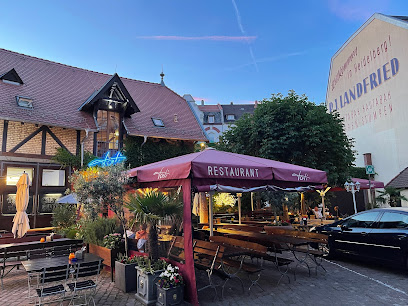
Café Restaurant Saron
28.8 km
Experience authentic Eritrean cuisine at Café Restaurant Saron in Heidelberg - where every dish tells a story.
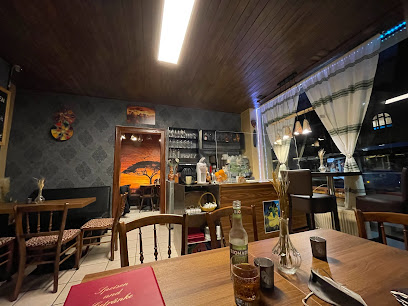
Markets, malls and hidden boutiques
The Rock Shop e.K.
27.3 km
Discover unique styles at The Rock Shop in Heidelberg—where local design meets contemporary fashion for every traveler.
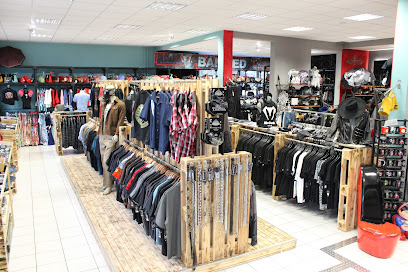
victor&linchen
27.8 km
Explore the charming gift shop victor&linchen in Heidelberg, where unique souvenirs, fashion accessories, and heartfelt greeting cards await.
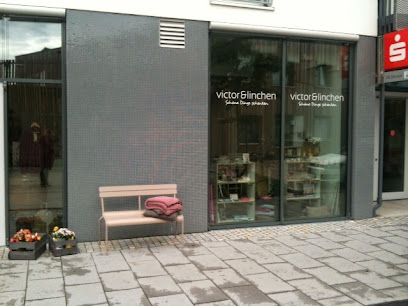
HeidelStein
27.9 km
Discover the magic of play at HeidelStein, Heidelberg's enchanting toy store featuring unique toys for all ages.

l'Armadio
28.4 km
Explore sustainable fashion at l'Armadio, Heidelberg's premier destination for unique, pre-loved clothing treasures.
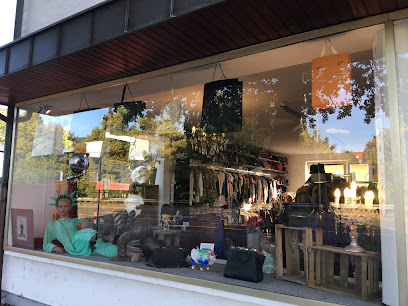
Balloon Boutique Heidelberg
28.4 km
Explore Balloon Boutique Heidelberg: A Colorful Haven for Celebrations with Unique Balloons and Party Supplies.
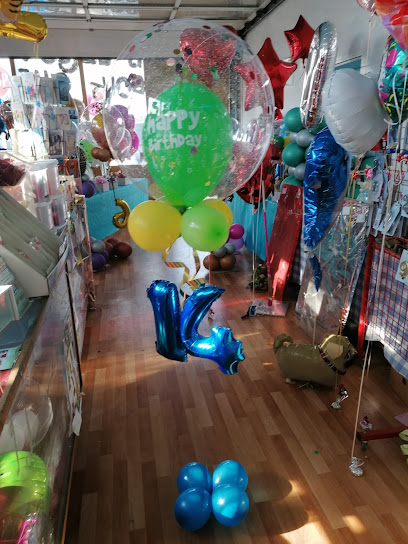
Schmitt & Hahn bookstore
28.4 km
Discover a treasure trove of books and unique gifts at Schmitt & Hahn bookstore in Heidelberg's bustling Hauptbahnhof.
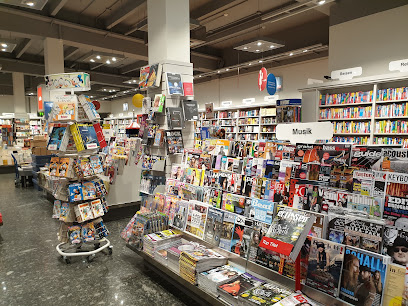
Backpacker Travel & Footwear Heidelberg
28.5 km
Discover top-notch outdoor gear and expert guidance at Backpacker Travel & Footwear Heidelberg for your next adventure in the picturesque city of Heidelberg.
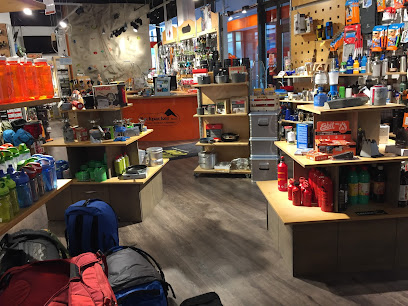
Rhein-Galerie Ludwigshafen
28.6 km
Explore the Rhein-Galerie Ludwigshafen, a vibrant shopping paradise with diverse stores, dining options, and entertainment by the Rhine River.
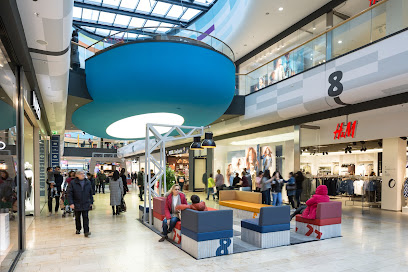
US SHOP MANNHEIM
28.6 km
Explore US Shop Mannheim, where fashion meets quality in a vibrant shopping experience, perfect for tourists seeking trendy clothing and shoes.
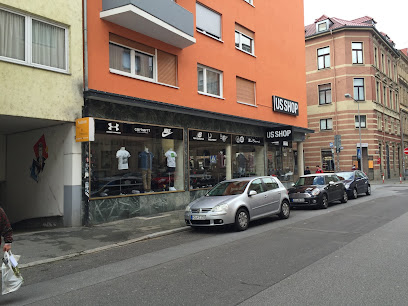
neyuQ ceramics
28.8 km
Explore handcrafted pottery and unique gifts at neyU Ceramics, Heidelberg's charming art studio and gift shop that captures the essence of local artistry.
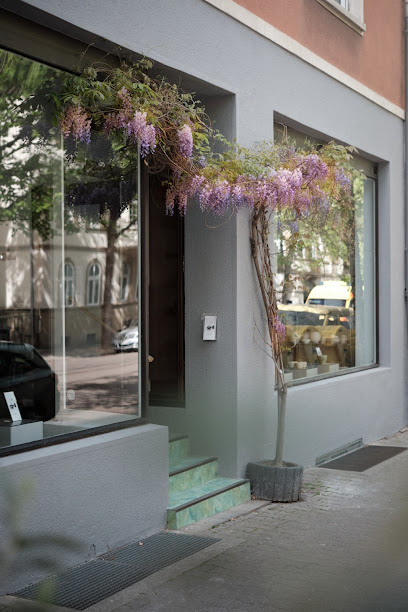
Fantasy Kolosseum Heidelberg
29.4 km
Explore the vibrant gaming culture at Fantasy Kolosseum Heidelberg, your ultimate destination for board games and community fun.
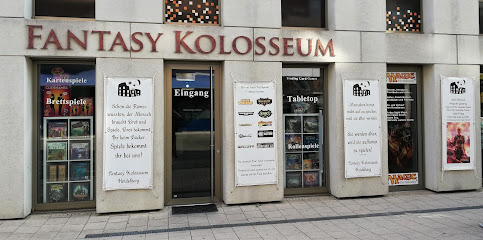
Boutique Alma
29.5 km
Explore Boutique Alma in Heidelberg for unique clothing and exquisite costume jewelry, capturing the essence of local style.
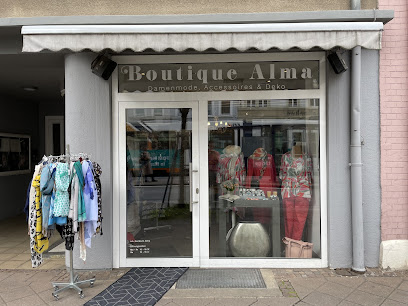
MyWay secondhand
29.6 km
Explore MyWay Secondhand in Heidelberg for unique, sustainable fashion choices that tell a story.

Geschenk-Boutique Heidelberg-Neuenheim | Originelle Geschenk-Ideen | Büro-Baum Papeterie
29.6 km
Explore Heidelberg’s charming Büro Baum Gift Boutique for unique gifts and delightful stationery that reflect the city's artistic spirit.

glore Heidelberg
29.8 km
Explore Glore Heidelberg for unique, sustainable fashion that enhances your style while caring for the planet.

Essential bars & hidden hideouts
Die Cocktailbar - Alexander Grewenig // Mobiler Cocktail- und Barservice
10.1 km
Discover the art of mixology at Die Cocktailbar, a premier mobile cocktail service in Dudenhofen, perfect for every celebration.
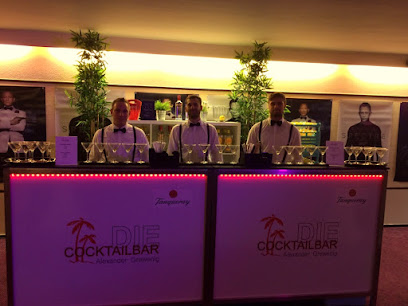
Rheinstrand Speyer
10.4 km
Experience the charm of Rheinstrand Speyer, where scenic river views meet refreshing drinks in a relaxed atmosphere.
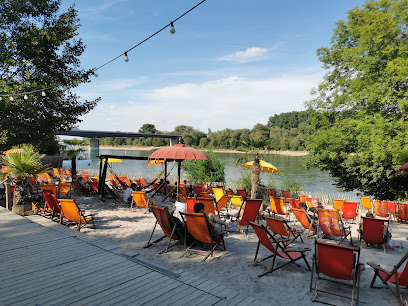
Die Kneip
19.9 km
Experience the vibrant nightlife at Die Kneip, a cocktail bar in Landau offering exquisite drinks, a lively atmosphere, and unforgettable events.
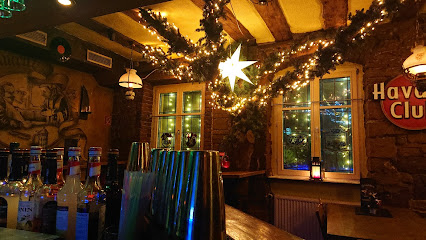
The Door - Liquid Kitchen & Highballs - Cocktailbar
24.8 km
Discover exquisite cocktails and a refined atmosphere at The Door - Liquid Kitchen & Highballs, Karlsruhe's premier cocktail bar.
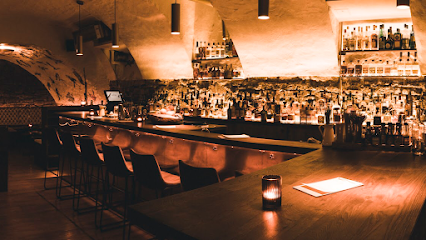
Neckarorte Strandbar Römerbad
29.1 km
Experience the charm of Neckarorte Strandbar Römerbad, a scenic riverside bar in Heidelberg offering affordable drinks and a vibrant atmosphere.
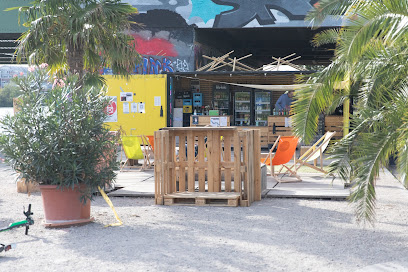
LINO'S Bar
29.6 km
Explore the vibrant nightlife of Heidelberg at LINO'S Bar, where expertly crafted cocktails and a lively atmosphere await.
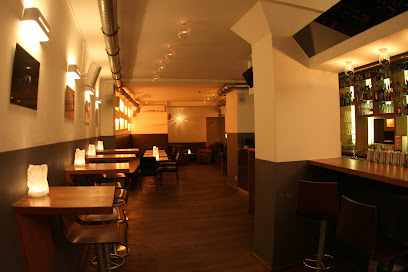
Ginsburg
29.8 km
Discover the vibrant atmosphere at Ginsburg, a bar in Heidelberg offering craft cocktails and a lively nightlife experience.
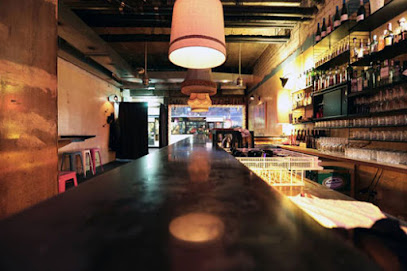
Hunter Bar - Ludwigshafen am Rhein
29.8 km
Experience the vibrant nightlife at Hunter Bar in Ludwigshafen am Rhein, where great drinks and friendly atmosphere await.
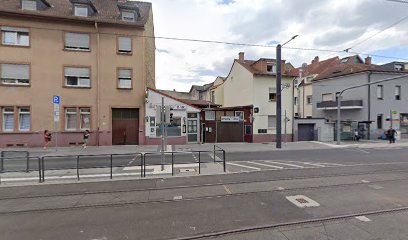
Sieferle & Sailer - Bar & Barber Shop
29.9 km
Discover the perfect blend of cocktails and grooming at Sieferle & Sailer in Mannheim - a unique bar and barber shop experience.
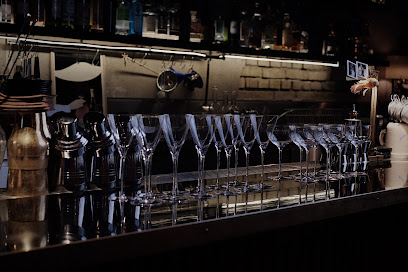
Hemingway's Heidelberg
30.0 km
Experience the charm of Heidelberg at Hemingway's, a lively bar and restaurant with a delightful beer garden and diverse menu.
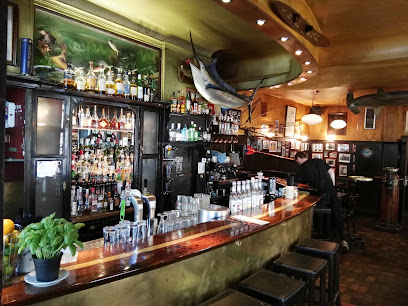
Bar Centrale
30.0 km
Discover the cozy charm of Bar Centrale in Heidelberg, where delightful breakfasts meet a lively bar atmosphere for an unforgettable experience.
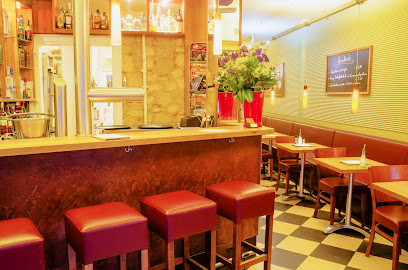
Bairro, Café - Bar
30.1 km
Experience the vibrant atmosphere of Bairro Café - Bar in Heidelberg, where delightful drinks and local culture blend seamlessly for an unforgettable visit.
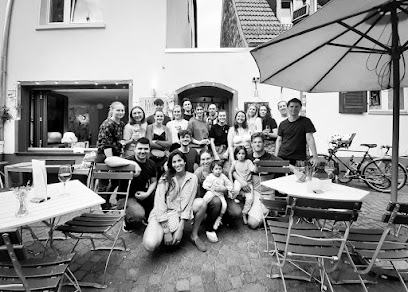
D'Acostor Italian Pub
30.1 km
Discover the vibrant taste of Italy at D'Acostor Italian Pub, a delightful gastropub in Heidelberg serving authentic dishes in a welcoming atmosphere.
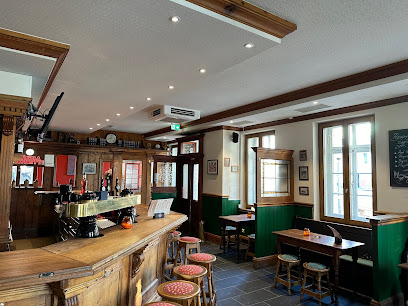
Bar d'Aix en provence
30.1 km
Discover Bar d'Aix en Provence, a cozy bar and café in Heidelberg offering exquisite wines and a warm ambiance for travelers seeking relaxation.
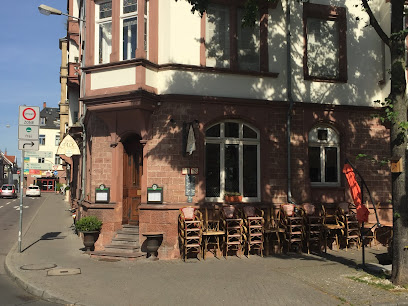
Vater Rhein
30.2 km
Experience the vibrant atmosphere and exquisite river views at Vater Rhein, Heidelberg's favorite bar and restaurant for locals and tourists alike.
